
amnarj2006/iStock/Getty Images
Derived from the cassava root, tapioca balls are processed, spherical pearls most often used as a thickening agent. The soft, chewy morsel rounds are the pivotal ingredient in desserts such as tapioca pudding and bubble tea, a sweet non-alcoholic confection popular with people of all ages. Although tapioca is also available in instant, or granulated, form, the more recognizable pearl form provides a chewy texture that is amenable to use in stews, gravies, pie fillings and sauces.
Bring 7 cups of water to boil in a large cooking pot.
Add the tapioca to the boiling water in a slow, but steady, stream until they rise to the top of the water and float.
Reduce the temperature to medium-low and place a lid on the pot. Continue to boil the tapioca for another 15 minutes, or until the pearls become translucent.
Drain the tapioca over a mesh strainer and rinse well with cool, running water. Use the cooked tapioca according to your recipe or cover and store the unused pearls in the refrigerator.
Related Articles
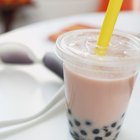
How to Make Large-Pearl Tapioca

Tapioca Flour Vs. Quick Cooking Tapioca

The Best Way to Cook Tapioca

What Is the Nutritional Value of ...

How to Use Guar Gum to Replace Gelatin
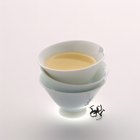
Substitute for Vanilla Custard Powder

Can You Reheat Tapioca?

How to Make Sweet Brown Rice

How to Cook Pearl Barley on the Stove

Can You Make Dumplings With Corn Starch?

How to Cook Agar-Agar Jam
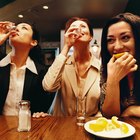
How to Make Sago at Home

How to Cook Dried Chickpeas Without a ...
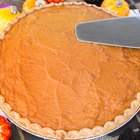
How to Make Pumpkin Pie

How to Substitute Cornstarch for ...

How to Make Frosting Using All-Purpose ...

Ingredients of Gelatin

How to Make a Sweet Saunf Mixture at ...
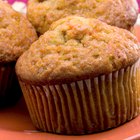
Substitute for Manioc Starch
What Can I Substitute for Cornstarch?
References
Tips
- For an old-fashioned pudding, soak tapioca pearls in whole milk for 60 minutes. Whisk in eggs, sugar and vanilla and cook over medium heat until the tapioca is fully cooked.
- You can color your tapioca pearls by soaking them overnight in assorted liqueurs, such as crème de menthe, dark rum or grenadine.
Writer Bio
Susan Brassard writes about natural health-related topics, complementary and alternative medicine and issues relative to a holistic approach to the aging process. Following a career in business and finance, she obtained a Master of Arts in gerontology and several certifications in energy therapies. She is the author of a workbook and resource guide for older adults.
Photo Credits
amnarj2006/iStock/Getty Images